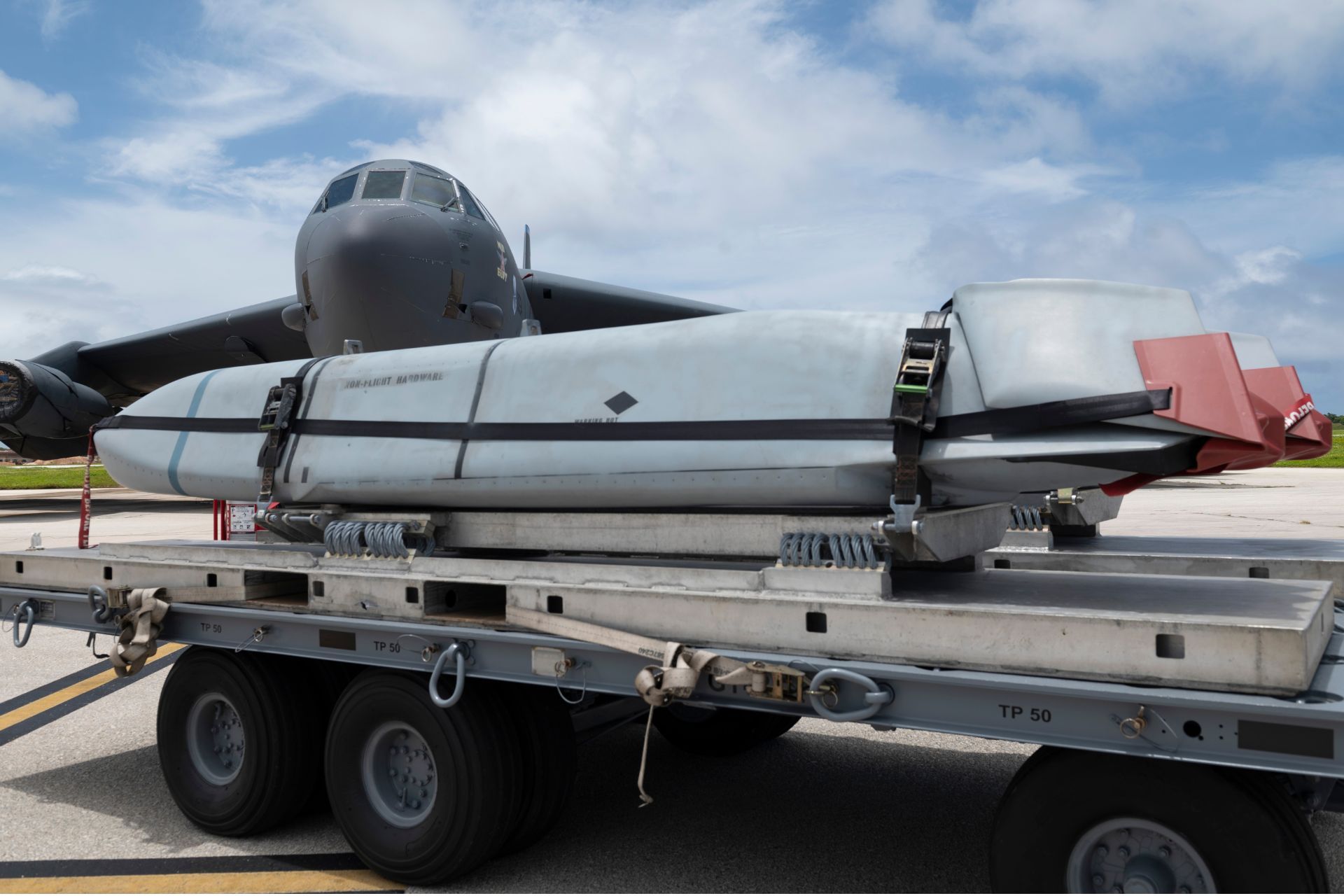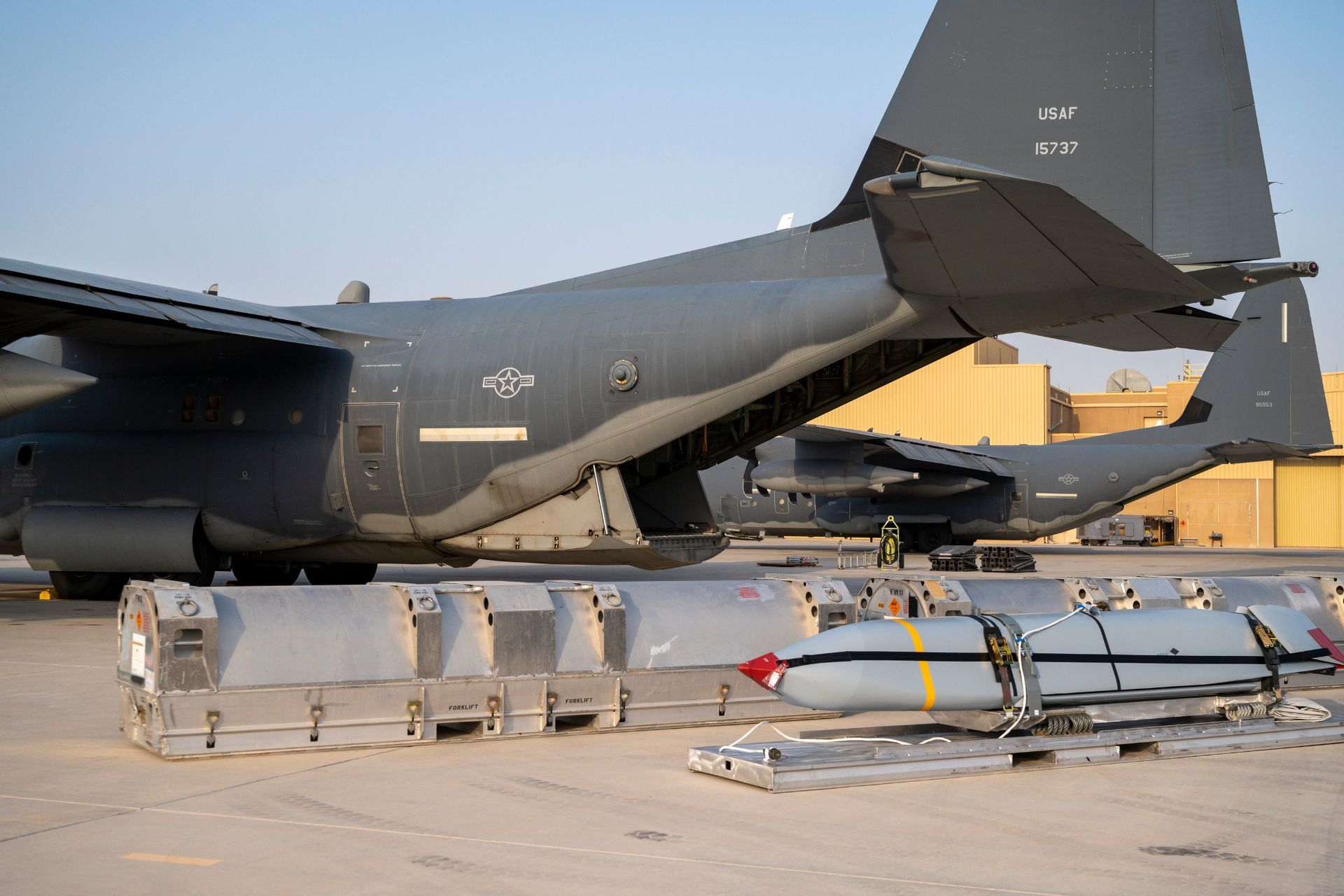Breaking News
US Military Command in Europe Recommends JASSM Missiles and Link 16 System for Ukraine.
The U.S. military command in Europe has compiled a list of American weapons systems that could enhance the effectiveness of Ukrainian forces in their fight against Russia, as reported by CNN on October 8, 2024. This list, prepared by General Chris Cavoli, includes long-range air-to-surface missiles, such as the AGM-158 JASSM cruise missile, and the secure Link 16 communication network, a data-sharing system used by NATO forces for air and missile defense coordination. Although the Biden administration has yet to approve the delivery of these systems, their inclusion in a classified report recently submitted to Congress highlights their strategic importance in supporting Ukraine.

Joint Air to Surface Standoff Missiles are prepared to be loaded on to a U.S. Air Force B-52 Stratofortress on Andersen Air Force Base, Guam, April 24, 2023 (Picture source: US DoD)
These recommendations were part of a confidential annex to a report on U.S. strategy in Ukraine. The document suggests that advanced systems like the JASSM and Link 16 could improve communication and coordination among Ukrainian forces, supporting a more effective military response to Russian operations. In particular, Link 16 would allow Ukraine to benefit from an interoperable communication network between various combat systems, enhancing command and control capabilities. However, U.S. officials have expressed concerns about the potential for sensitive technology to fall into Russian hands, which likely presents an obstacle to providing the Link 16 system. The JASSM cruise missiles, meanwhile, would require Ukraine to establish some degree of air superiority to be fully effective.
JASSM missiles, typically launched from fighter jets, could provide Ukraine with an additional offensive capability, though their full operational effectiveness depends on achieving a certain level of air superiority, which Ukraine currently lacks against Russian aviation. The basic JASSM model has a range of 360 kilometers, while the extended-range JASSM-ER can reach targets up to 980 kilometers away. These missiles, equipped with a 450 kg warhead, are already in service with several NATO countries and close U.S. allies, underscoring their reliability and strategic importance in Western defense.
Link 16 is a tactical data link network used by NATO members and other nations, enabling near-real-time data sharing between military aircraft, ships, and ground forces. With its secure, jam-resistant transmission capabilities, Link 16 allows units to share precise location data, target surveillance, mission coordination, and electronic warfare information. Operating in the 960-1,215 MHz radio frequency band, Link 16 uses time-division multiple access (TDMA) and also allows for text, image, and voice transmissions through two digital channels. Although its range is limited to line-of-sight, ad hoc protocols, and satellite capabilities enable it to transmit data over longer distances via TCP/IP. Link 16 conforms to MIL-STD-6016 and STANAG 5516 standards, supporting coordination across various defense platforms, such as fighter aircraft and naval and ground defense systems, making it essential for NATO operations.
In September, U.S. administration sources revealed to Reuters that an agreement to transfer these missiles to Ukraine was nearing completion, confirming a proactive approach by the U.S. in military support for Kyiv. However, concerns persist, particularly over the risk of sensitive American technologies falling into Russian hands, which may explain the reluctance to fulfill certain Ukrainian requests, such as for the Link 16 system. Despite these concerns, the Pentagon’s intention to transfer JASSM missiles highlights a strategic approach aimed at bolstering Ukraine’s deterrence capabilities and providing a robust response to Russian military assets.

JASSM missiles, typically launched from fighter jets, could provide Ukraine with an additional offensive capability, though their full operational effectiveness depends on achieving a certain level of air superiority, which Ukraine currently lacks against Russian aviation (Picture source: US DoD)
Nearly three years into the conflict, Kyiv’s requests for advanced weaponry continue. Ukraine is pressing for eased restrictions on how long-range missile systems provided by the U.S. can be used. During a White House meeting last month, President Volodymyr Zelensky presented President Joe Biden with a detailed list of strategic targets in Russia that he aims to strike with U.S.-supplied ATACMS missiles as part of his “victory plan.” Although Biden did not dismiss the request, he remained noncommittal about providing missiles for strikes within Russian territory. For now, the U.S. allocates its military support based on military assessments, which indicate that currently available systems meet Ukraine’s immediate battlefield needs.
To secure military aid amid a possible policy shift if the administration changes in the upcoming November elections, the U.S. is working with allies to ensure Ukraine has sufficient resources until the end of 2025. NATO launched its own mechanism for support and military training in July, and the Pentagon plans to contract American private companies to assist with equipment maintenance on the ground in Ukraine.
On the military front, U.S. officials anticipate that 2025 could mark a turning point in testing Russia’s capacity to sustain its war efforts. Russia has lost hundreds of thousands of soldiers, and analysts suggest that Vladimir Putin may be forced to order another politically risky troop mobilization. Although the Russian economy has withstood Western sanctions, some signs of pressure are beginning to emerge, which could become more evident by the end of next year. CIA Director Bill Burns remarked at a national security conference that demonstrating American support for Ukraine remains crucial in countering perceived weaknesses in U.S. commitment.
Critics argue that the U.S. strategy for victory in Ukraine lacks a clear definition. While the report to Congress references concepts of Ukrainian sovereignty and self-determination, some observers note the absence of specific success metrics. Currently, the situation on the battlefield remains fluid. In response to recent Russian advances in the country’s east, Ukraine has succeeded in gaining and holding territories in Russia, a success that some officials believe could spread Ukrainian resources thinly across an expanded front.


























